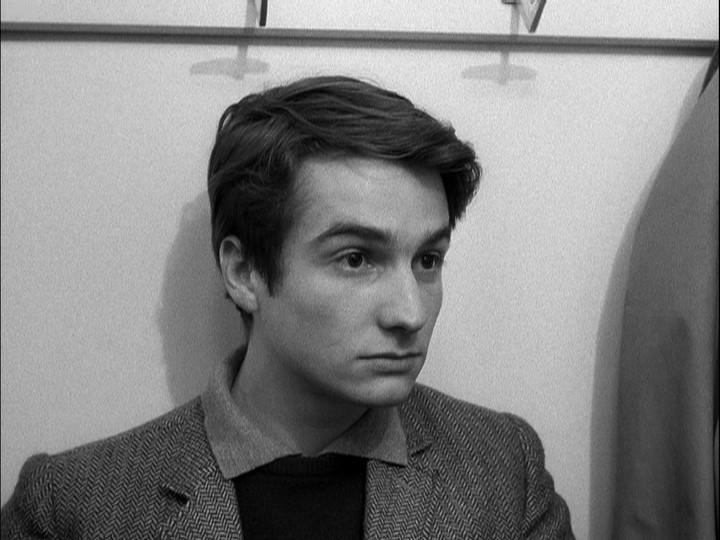In terms of entertainment value, I believe that this supposed value is not a requirement for any film or work of art. Any cineaste that identifies entertainment value as an essential requirement for a film is not a cineaste at all. Nonetheless, within a consumer culture, we are generally conditioned to analyze how we feel about a specific product. The most basic assessment begins with the question of good or bad. Was this a good film or a bad film? During this post-screening stage, it is equally important to question the value of a film in terms of what was expressed rather than whether it provided an instance of diversion. In terms of Godard’s work, the audience must not fall into the “thumbs up/thumbs down” form of analysis. By contrasting two films from his early and late 60’s period, we can begin to identify the shift in spectatorship.
Breathless has generally been identified as an entertaining film. When compared with Masculin/Feminin, both works contain similar structural elements: boy meets girl, boy romances girl, boy/girl relationship results in the death of the protagonist. Although both films have a similar story structure, the tone of each film is decidedly unique. Specifically, the shift in tone can be noted in the long form scenes of the hotel room and the bathroom. The Michel/Patricia scene applies amusement within the act of seduction. Both characters apply movement, facial expression and diversion to interact with each other. The moment in which Patricia rolls up a poster and frames Michel within the image is indicative of this playfulness. Not only a reference to cinema, the framing allows us to visually acknowledge the attraction between both characters.


This example represents a microcosm of Godard’s work as a whole. Ultimately, I enjoy both scenes with equal passion. The playfulness of Breathless is enjoyable and entertaining. The starkness of Masculin/Feminin foreshadows the inner turmoil of each character. Although the scene is not outwardly entertaining, it has a relevance that reaches beyond audience satisfaction. Rather than providing a diversionary satisfaction, the scene provides a satisfaction of profound expression.
To conclude, I would like to share the trailer from Masculin/Feminin. By observing the pace, rhythm and energy of the trailer, it would be fair to assume that the film would have similar inherent qualities. My fascination with the trailer is the manner in which it provides an entertainment value that the film does not. Paradoxically, the film as a whole stresses a meaning that is only glossed over in traditional box office product. As an analytical example, the trailer provides the viewer with an opportunity to appreciate both approaches to film style and to distinguish between entertainment and depth of expression.
With his later films, Godard appears less concerned with entertaining and more interested in “informing” an audience. He is consumed by the message and, more specifically the text or literary foundations from which the content is derived. In my next blog entry, I would like to analyze whether or not this approach reflects a symbolic betrayal to the integrity of the cinematic arts.
To conclude, I would like to share the trailer from Masculin/Feminin. By observing the pace, rhythm and energy of the trailer, it would be fair to assume that the film would have similar inherent qualities. My fascination with the trailer is the manner in which it provides an entertainment value that the film does not. Paradoxically, the film as a whole stresses a meaning that is only glossed over in traditional box office product. As an analytical example, the trailer provides the viewer with an opportunity to appreciate both approaches to film style and to distinguish between entertainment and depth of expression.
With his later films, Godard appears less concerned with entertaining and more interested in “informing” an audience. He is consumed by the message and, more specifically the text or literary foundations from which the content is derived. In my next blog entry, I would like to analyze whether or not this approach reflects a symbolic betrayal to the integrity of the cinematic arts.
echeverria
No comments:
Post a Comment